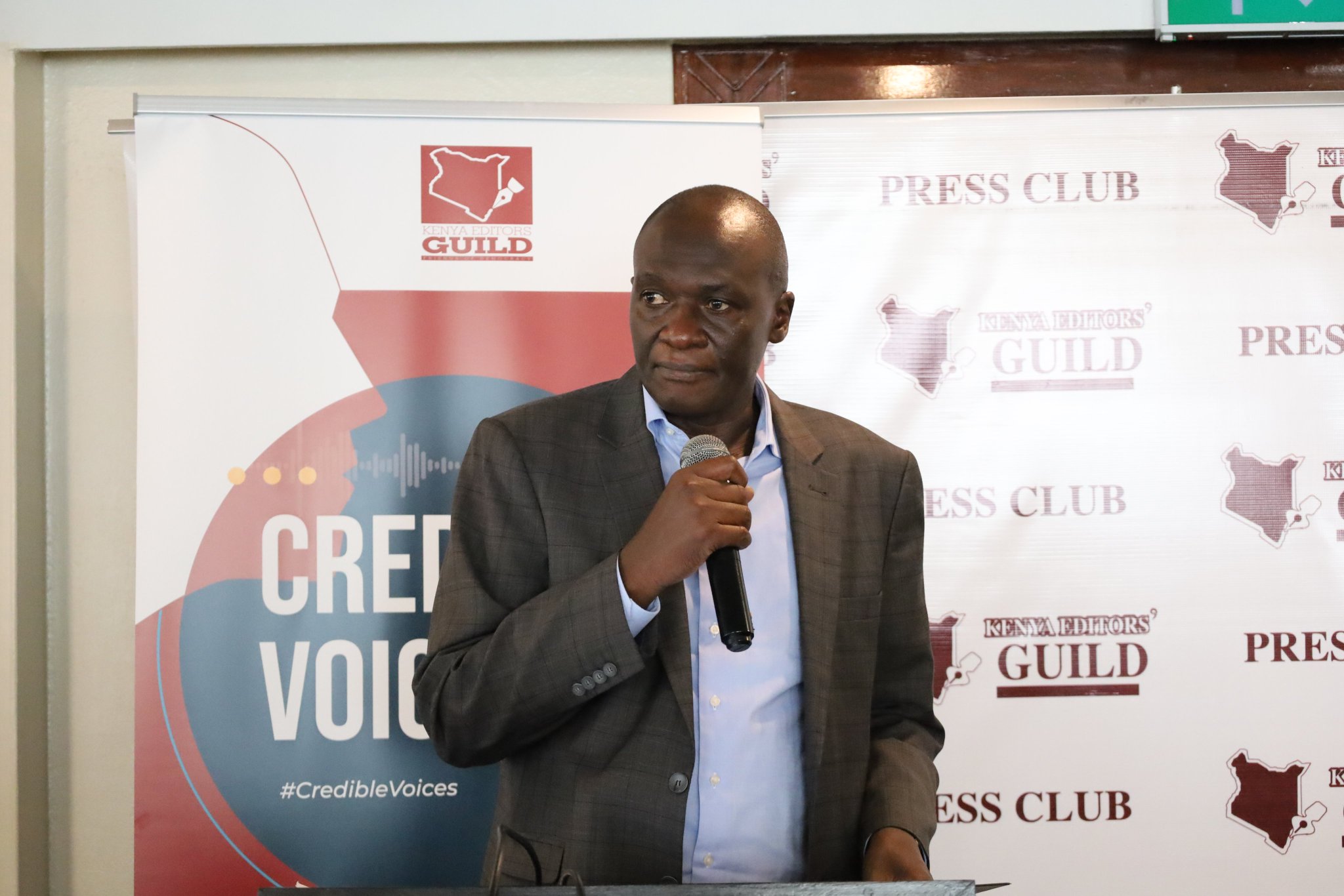By Lenah Bosibori
Nairobi, Kenya: Kenya has made great strides in cervical cancer vaccination and prevention in accordance with the World Health Organization (WHO) global targets despite the Covid 19 disruptions that slowed the exercise. The ministry said on Friday.
Speaking during a Press Club Luncheon organized by Kenya Editors Guild on Cervical Cancer Sensitization vs Vaccine Status held on Friday, Dr. Patrick Amoth the Acting Director General Ministry of Health said that as the global community, they agreed that cervical cancer is such a big problem and agreed to come up with targets to be achieved by 2030.
“As a global community and through WHO where Kenya is a member of 194 member states’ constituencies, we have global targets. Notes Amoth, “We agreed as a global community that cervical cancer is such a big problem, and therefore we needed to come up with targets or indicators to track towards elimination of this disease by the year 2030,” said Amoth.

In May 2018, the WHO Director-General announced a global call for action to eliminate cervical cancer, underscoring renewed political will to make elimination a reality and calling for all stakeholders to unite behind this common goal.
According to WHO, each country should meet the 90–70–90 targets by 2030 to get on the path to eliminate cervical cancer within the next century. Cervical Cancer Elimination Initiative targets are 90-70-90 meaning that 90 percent of girls to be vaccinated with the Human Papillomavirus vaccine (HPV) by the age of 15, in this case, Kenya targets girls between the ages of 10-14 years old.
It also states that 70 percent of women screened using a high-performance test by the age of 35 and again by the age of 45, the last one is that 90 percent of women found with pre-cancer treatment and 90 percent of women with invasive cancer managed.
To eliminate cervical cancer, all countries must reach and maintain an incidence rate of below 4 per 100,000 women. Achieving that goal rests on three key pillars and their corresponding targets:
Where is Kenya in WHO targets on Cervical Cancer
Target one was to vaccinate 90 percent of girls under 15 years, our guideline is 10-14 years, dose one we are at 28 percent, and dose two is administered after six months we are at 24 percent, we started in 2020 and later we were disrupted by COVID-19, we are able to achieve 90 percent if we work collectively together notes Amoth.
HPV is administered in two doses, the first one being a zero dose and the second dose after six months. If you look at that interval of six months, some people forget, some lost follow-ups they move from one facility to another.
Amoth remarks that there is hesitation when the country introduces a new vaccine making it a challenge to get everybody on board. “There is the issue of vaccine hesitancy, misinformation, and disinformation and most of the guidelines indicated that only girls take the vaccine,” says Amoth.
He adds that at first there was a backlash from religious communities making it difficult to administer the vaccine to young girls. “You remember the battles we had with religious communities, getting those people on our side to be able to start making moves in terms of numbers was not easy,” he notes.
Goal 2 is to be able to ensure that 70 percent of our women aged 25-49 years are screened annually. “Our annual target is about 1.1 million women. As of last year, we were at 38 percent, between now and 2030 we need to do the remaining 32 percent and maybe exceed the global target,” he adds.
Amoth reiterates that progress has been made though slow due to disruptions by COVID -19 but all is not lost, it can be able to cover the lost ground.
The third target is that 90 percent of women who are screened and found to have precancerous or cancerous conditions are treated. The government has worked together with partners to ensure that they build the capacity of the health workforce to be able to know what is pre-cancerous, what is normal, and what is cancerous. “As a government, we have been able to supply over 1000 machines,” adds Amoth
“We have the tools to be able to wipe this disease from planet Earth, but we need journalists so that we can convey the right information.
Challenges hindering the WHO targets
Some of the challenges facing vaccine intake have been public awareness, stigma and discrimination, and human capital. “We have a scarcity of trained specialists in that area. The challenge of dealing with chronic diseases includes financing,” notes Amoth.
“The government has also made significant investments in the space of cancer, especially in the last 10 years, we have one center at the Kenyatta University Teaching and Referral Researchers that is basically principally focused on cancer management.
Another one is Kenyatta National Hospital (KNH), Moi Teaching and Referral Hospital (MTRH), Nakuru, The Coast Regional Cancer Centre, and Garissa. “ We are trying to ensure that access and coverage is improved so that we don’t have to travel huge distances to be able to receive the treatments,” adds Amoth.
Further Amoth adds that at the global level, the ministry is working with the International Atomic Energy Agency which has gladly offered to give two lineup linear accelerators used to generate the beams that are used to pass the cancer cells, one will be in Nakuru, and KNH.
Cervical Cancer affects the poor, the marginalized communities, and those who live in underserved communities the reason the ministry joined the Kenya Editors Guild is to share the strides made and share information with the public through the media so that the public can be able to get the correct information.
Cervical cancer is the second most common cancer after breast cancer, but in terms of mortality it is the leading in deaths according to 2022 data that led to 3900 deaths, that is about 10 women dying every day of cervical cancer according to Amoth.
Prevention and elimination of Cervical Cancer
“As a government, we are shifting from curative to preventive and promotive services. We have taken that shift because the burden of Non-Communicable diseases including cancer is on the rise and we have a shortfall of healthcare workers. WHO says that by 2030 we will have a shortfall of 10 million healthcare workers globally,” notes Amoth.
According to Amoth, nearly 50 percent of that deficit will be in Sub-Saharan Africa. This is the reason we have taken that fundamental shift from curative to preventive and promotive, placing health and wellbeing squarely at the household level.
Kenya piloted the Human Papillomavirus (HPV) vaccine in Kitui County in 2019, and the vaccine is available free of charge in all public health facilities.














